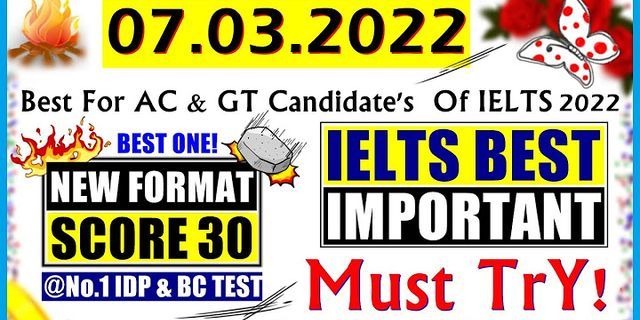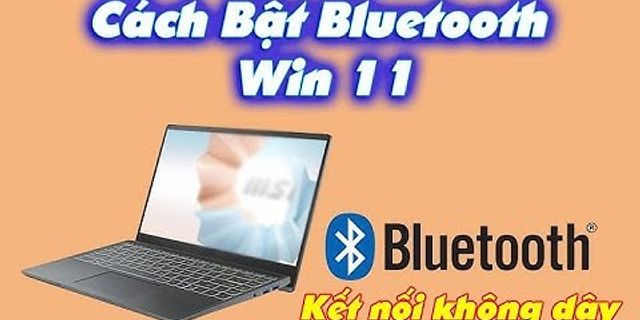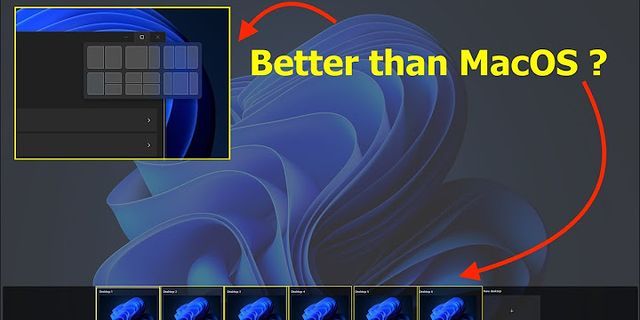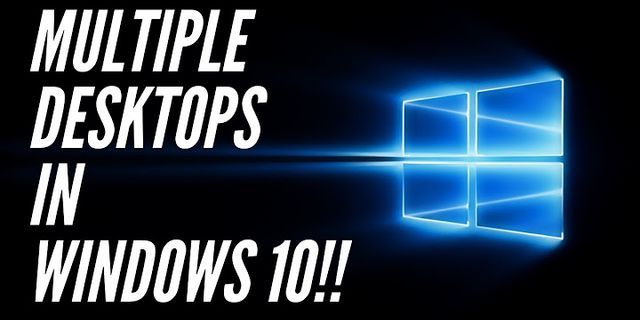Leaving a video review helps other professionals like you evaluate products. Be the first one in your network to record a review of Remote Desktop Manager, and make your voice heard! Unlimited Users, Multiple Sites, Single Country Remote Desktop Manager (RDM) centralizes all remote connections on a single platform that is securely shared between users and across the entire team. With support for hundreds of integrated technologies — including multiple protocols and VPNs — along with built-in enterprise-grade password management tools, global and granular-level access controls, and mobile apps to complement desktop clients for Windows and Mac, RDM is presented as a Swiss Army knife for remote access. RDM is built to enable IT departments to drive security, speed and productivity throughout the organization, while reducing inefficiency, cost and risk. A quick overview of Remote Desktop Manager by Devolutions. See how you can easily and securely consolidate all your remote connections, credentials, and passwords in a centralized platform. Download the FREE edition here: https://remotedesktopmanager.com/Home/Download You c... Show More
Remote Desktop Manager (RDM) from Canadian software company Devolutions is a remote administration and credential management tool for securely centralizing multiple remote connections and sensitive data. Remote Desktop Manager starts at $249.99. Reviewers rate Remote Active Directory® management highest, with a score of 9.9. The most common users of Remote Desktop Manager are from Mid-sized Companies (51-1,000 employees) and the Information Technology & Services industry. As a company with close to 1000 remote users, we used to use MS Remote Desktop management offering amongst others to support them. Whilst this was great it was depreciated and had huge vulnerabilities. On the hunt for an alternative we came across Devolutions offering and it’s superior in every way. Supports Windows RDP, Unix terminal sessions, and many more options and integrations. Offers cloud backup of config. Initial load up of the application could be quicker. Well suited for anyone who wants to support users or manage servers across the LAN/SWAN. Not suitable as a remote tool replacement for TeamViewer etc. Remote Desktop Manager is an excellent tool to manage connections to other machines. I particularly like its easy re-connect feature which makes the re-connection to a windows VM very fast and effective - saving lots of time and efforts. I am sure its of use for lots of teams and more team members. Easy re-connect to a disconnected VM Make re-connection automatic process Managing one or more machine connections is an excellent job that's done by Remote Desktop Manager. I am also fan of its tabbed interface, always updated artefacts, latest tools getting added and ease of the user at the centre of everything by RDM. Admin's help may be needed for initial install for non-privilege users. Remote Desktop Manager is used by our IT department and we use it to manage all of our customers environments.It addresses:- being able to connect to an online database so it's always up-to-date with the most recent info- storing all the passwords in the vault - connecting to all of our customers Lets us connect to remote environments through gateways set up by RDM Always up-to-date cause of our online database When I use the view password option, I have to close the password screen before I can use RDM again. I would like a copy hostname option It is well suited when you have to manage a lot of different servers/websites/network devicesIt is also well suited for when you have to manage remote environments because RDM can set up VPN gateways to that environment so you don't have to use VPN options from your workstation itself. It is less appropriate when used in very small environments We use Remote Desktop Manager to manage remote sessions, keeping our session organized and consistent amongst our team. We can organize, add, and ensure all of our remote session are in the same place and are easily updated from a single point. It also helps us tie in automation in some cases. The software is flexible enough to be used in most scenarios. I'd say you can use the 'free' version to manage fewer sessions and with a smaller team or solo team, but the full version is better for centralized environment with many people or with a tenant or role based access to systems. It's overkill if you only remote into 1 or 2 systems unless you make use of the integrations it offers. Many IT professionals use Remote Desktop Manager throughout our organization. Remote Desktop Manager is a critical component of working in many different server environments. It organizes remote connectivity to servers in such a way that it makes it easy to jump around in and out of servers to do needed work. The folder structure is similar to Windows Explorer and makes it easy to organize the servers in logical groups. Credentials can be managed easily in one place and applied to individual or groups of servers. Lots of flexibility in setting up the environment, this can be a huge time saver if utilized. Remotely access hundreds of servers in a clean and organized environment. Swap back and forth between several live sessions easily with tabs. If using more than one monitor with different resolutions, moving Remote Desktop Manager server resolutions don't match the second monitor when moving from one monitor to another. I recommend Remote Desktop Manager to any IT professional that needs to manage logging in and out of servers remotely. There are tons of features, but even just for simple organization of servers and credentials and the ability to work in multiple server environments and navigate freely and easily among them, this tool is outstanding. I've never had to use support as I've never had an issue. That said, you can open a support ticket right from the UI. The user forums are active, and there are thousands of threads covering many topics. Very easy to get support if needed. This is an easy ten. Remote Desktop Manager is used for transparency of new remote locations taken over from different companies. Transparency of the infrastructure. Usability (MS look and feel). In my area of work, this is a must-have. We use it to document processes since we cannot remember them anymore since there is simply soo many different processes because of many different remote locations. I had to contact them once for a simple question and they were very helpful and gave me a min training of sorts. Remote Desktop Manager is an application that enables the computer users to log unto another computer (usually company machine), in a remote location, to perform a task. When such a task involves assisting or troubleshooting to resolve an incident, it is called Remote Assistant. Whatever the case may be, the concept is built on connecting to from a base computer to another computer in a remote location to perform a task. Customer service delivery, whereby you can connect to clients to assist and resolve an incident. Working from home logging onto office based machine. It helps to attend to a problem more quickly, thereby saving the cost of relocation and commuting to distant places. Speed and cost elements are critical here. A case in point is where there are connectivity issues like congestion, poor network, or absence of it. Access control or security concerns that may prevent the service giver from accessing and assisting the client. Where the expected feedback may not be adequately communicated to the service giver due to the client's limited knowledge, this would be different if the assisting Technician/Engineer is physically present. Where distance (physical location) is a factor, but there are no connectivity issues, it is well suited, but where there is connectivity issue, and the distance and commuting are no problems, physical contact instead of remote desktop is advised. It is a matter of cost and benefit, quality service, and Service Level Agreement delivery. Business does not have to be physical all the time, more so in the face of the 'digital revolution.' RDM is being used by the whole organization, at least for everyone involved in remote support to our customers. Centralized information in SQL database. Logging of all used sessions. Notification when a user has left using a session, so others can start using it. When a company is connecting very often to remote locations (like to customers), Remote Desktop Manager is simply the best on the market. Devolutions is very actively listening to its customers and when a problem is detected, it will be solved very quickly. And not only problems but also new features which are beneficial to others are very quickly implemented. I'm using RDM since 2011. It's a really easy program where you can store and share (securely) all kinds of connections you can think of. For smaller companies, it lacks security features like 2FA, but for some time now, you can log in to RDM using your Office365 account, where you can set it to use MFA. However, it would be better if also smaller companies could use the native security features in RDM (or DPS). Other then that, I like it! Store every type of connection. Not all security features are available for smaller companies (like 2FA). It's excellent for storing of every type of connection you can think of. Support has always handled issues professionally and quickly. Remote Desktop Manager is used by many team members within my organization and I recommend it to any users I see using a Remote Desktop type product. It allows for storing and creating various different connection types. It keeps a backup of your connections. It allows for searching for your various connections. Any type of remote connection type that is needed can be accomplished with a single product. Allows for storing large numbers of connection profiles. Multiple connections can be performed at a single time all within a single window. Can backup and restore connection settings or store in the secure cloud. It can track/report on users activity. It could be a little faster to load/startup. It could be a little faster when connecting to remote clients. If you have a need to support/connect to various remote computers/sites then Remote Desktop Manager is the go-to product. If you only need to connect to a few machines, and don't need different connection types, it's not really the tool to use. I use it on a daily basis as my one-stop app for all my daily IT support needs, it means I have quick and easy access to all my client's sites and sessions in one app. Before Devolution's Remote Desktop Manager, I had to use several applications to do the same jobs I now do with just the one app. Massive selection of entry/session/credential/notes. Multiple data source types available to use, some of which are hosted by Devolution themselves Has an addons manager which means if you can't find what you're looking for in regards to entry/session/credential/note types, etc., then you can probably download those via the addon manager. I would like to see advanced auditing in the Devolution's drive data source like there are in some of the others. But that's just something I'd like to see, it doesn't hinder my using the app. I would love to see even more addons available from even more software and service developers, but again the addon manager is great already so it's not a hindrance what so ever. I've tried many alternatives since discovering Remote Desktop Manager by Devolution's but none have come close to all that Devolution's RDM can do. I am a freelance IT Consultant who does nearly all work now remotely. With RDM I only need the one app for everything I do on a daily basis and I've not come close to utilizing all it's able to do and, if that wasn't enough, the Devolution's Devs keep updating with new features, improvements, and fixes. Also, the Devolution's catalogue is growing and they all work efficiently with one another. If you can't find an entry type you want to use in RDM then take a look at its add on manger which has even more useful entry types for the majority of the other big named apps out there meaning what you're able to do in one app keeps expanding further all the time. All I can say is if you use remote desktop managers of some sort then you really must give Devolution's Remote Desktop Manager a go, I'm quite sure you will never look back!!!!! Devolution has a forum, ticketing system and live chat system in place which means I've always been able to get support whenever I needed too. Also, the team has always been able to answer my queries to my satisfaction. It is used to access our electronic displays remotely. I can run around and plug in a keyboard into each of the PCs that run our electronic displays and work on them directly but it is way more efficient to log into the backend of each and make the change on each of them at the same time. I also use RDM to connect to servers and make changes on them as well. The servers have no local access because they are VMs but I can remote into them and make changes. RDM makes it possible to have all of those connections at the same time on different tabs so I can get a lot of work done is a short period of time. You can connect to many different types of systems, RDP, VNC, SSH, Telnet, VPN, WebDAV, FTP, ARD and more. Your session data can be stored in a cloud system to move them back and forth on multiple devices. You can also send commands to the systems via actions, so if you have repetitive tasks it helps make it quicker. The system takes a bit of screen real estate. It takes a bit to set it up when you have many different systems that you want to connect. There are more features than I will ever find and I wish I knew them all but I can't even expect to find them all. If you use any system where you connect remotely and have to get into the system from time to time. RDM makes it so you can just make all those connections and never have to input them again. Just click the server/connection you want and you will be able to make changes. We are using it for our PAM solution as well as other teams are using a central database for a group of servers. It gives a better way to user our PAM solution for RDP purposes. The ability to connect with our PAM tool. Not sure just started using the tool about 3 months ago. It is a great tool for our PAM solution. I typically say this to people… “Imagine a world where all of the things your users do can be managed in one place and call that island devolution.” Instead of these users trying to figure out what they’re doing next and having a messy blob of sessions open, everything is organized, embedded, and fast. Lawyers are demanding (and insanely expensive) so the faster production moves, the better off everyone is. I feel like RDM was a critical part of our company’s story… from start-up to the acquisition by Xerox which later split off BPO divisions into Conduent. The ability to keep people focused on the end zone kept my sanity in check and our success driven. Batch edit – I have far too many sessions that require user specific modifications Users, Groups, Roles – Critical when fine tuning user experience/destructiveness Macro/Scripts/Tools – Just plain handy and usable… continuous ping for all of those reboots. Ingest of endpoints/sessions - Could be easier. Memory requirements... not sure there's anything they can do about that since it's not really reinventing the sessions. Session Management – With around 2000 entries, I guess this goes without saying. I remember a time when there were a growing number of sessions to manage and the software available was pretty difficult to use and lacked the functionality that I needed. User Experience/Hatemail – The interesting thing about this business is that many of the users also need roughly the same session management tools to do production work. They focus on the applications at the endpoint whereas I focus on the endpoint. This means that they don’t have time/energy to figure out the sessions and if things aren’t easy for them… well… work slows and they get frustrated… at me. Security – Due to the above, I needed to be able to figure out where/what the users were doing as well as what they were exposed to and able to access. I use it in multiple companies to access my resources. I also use it at home to support my customers. I've created some automatic connections so I don't have to start my VPN connections all the time. I don't have to worry if I'm on site VPNed in or not, RDM does the checking and connecting for me. It saves me time when I'm in a hurry to connect to a resource to fix an issue. Also, I use a shared data source on OneDrive so I don't have to spend my time copying my password to different laptops. Saves me time and hassle. The price is very reasonable and with the amount of time, I save it's well worth the coins. I've been using it for years and have not seen a product that makes me want to change. Creates dynamic connections that don't require me to remember all my passwords Creates dynamic connections that don't require to check if I'm local or remote. RDM does it for me Support multiple types of connections and information repository. Honestly, for my usage, I have not found any missing features. It works great and does what it needs to for me. My best scenario is going from work to home and not having to worry about being local or needing to remote in. RDM does the checking for me. Plus with my data source on OneDrive, I don't even have to worry about an out of sync password on my different workstations. They are always all in sync even when working at different sites and for different companies. We use Remote Desktop Manager as a business critical application by storing the password for more than 1000 corporate clients. It is used by our internal call center and project staff to connect to the different client sites and IT infrastrucutre. The reason why we use it is to keep the client password secret for our staff and protect the business if we have to replace or fire one of our techs without them knowing the actual password. Prevents passwords from being leaked through the organisation Centralises password information in a secure database Manage our clients in one tool Eventually could be used by users instead of IT staff Slow to load database when you have a lot of files or documentation Good for IT Businesses managing different IT infrastructure. To my knowledge, it is being used primarily in the IT department within various roles. It addresses a need to centralize my credentials with the many servers I manage. It greatly streamlines the management and storage of machine names and credentials. When you manage several hundred to thousands of servers, this is a huge advantage. Ability for a single database for changes to machines The process of linking an external credential repository could be easier Well suited for large-scale management of server environments, especially when you need to change them frequently. I am not sure of a scenario where it is less appropriate. I am using it in conjunction with VPN to manage customer servers. It is used by at least three other consultants. It addresses the need to organize multiple customers and their servers and keep organized about it along with keeping credentials in one place. Store information on multiple customers Keep RDP sessions organized Allow multiple sessions in tabs Better password management for multiple SSH hosts. I think it is great for managing multiple desktops internally as well as externally. It is especially great for external management as you can specify to log onto a VPN before connecting to the target. If you are a small shop with just a few computers, this may not be for you. Our whole department uses Remote Desktop Manager (RDM). The issues that it solves is being able to access our department servers across the campus. Since our information is sensitive having the ability to log in via RDM has shown to be very helpful at letting us present information to our customers as well as keep our information about how we run business secure. Provides a secure network connection to your base computer, as well as allows for mobility. Company provides great customer support and troubleshooting if needed. Allows your in-house IT department to troubleshoot computers remotely, which is especially helpful in large meetings when you are having technical difficulties. I have also noticed a smooth file transfer process.
RDM has saved me in meetings where I did not have the information that was needed on me due to unexpected questions. But I was able to quickly log in to my office computer and pull up the information that the customer was requesting. Instances, where I do not think it is highly needed, is a small office environment where you do not travel, have off-site meetings, or do a lot of work from home. My employer collaborates with over 100 companies across the province, we manage almost all our clients with RDM. Remote connection to servers Software license key management Implementing a "favorites" tab or group Allowing you to send a message to the person already connected to a device Auto-disconnect from a session Remote Desktop Manager is well suited when managing multiple clients and complex infrastructures. It is an excellent solution to keep all of this information stored and protected in one place and not having to move between different solutions to perform your work. It gives us efficiency, which clients appreciate at the end. In my current role, we are not using Remote Desktop Manager but I sure wish we would. I have used RDM for awhile in the non-profit where I volunteer for IT duty. There are so many different functions and features in it that I can't understand why we aren't considering it at my current place of employment. Coming from things like VNC and others we use and have used I can only say that you should really try out RDM for yourself. No matter how many words are written that may or may not convince you to try it you should ignore those and try it out yourself. That's the only way you can truly discover the benefits from RDM. Be sure even after using it for a while you will still be discovering new and intriguing features. I like the management console because you get to use the different features from one and the same place Security and user management as these days good security is vital. The log feature is nice as it allows you an easy overview of what was done with Remote Desktop Manager Powershell cmndlet scripting as i'm a powershell geek. Can't immediately think of a feature that hasn't been discussed in the Devolutions community. Suggest you head over there to check it out. Well RDM is the sleekest looking best performing remote tool I have worked with or messed with. Nearly no lag from the remote connection. Once you dig through its security settings I'm sure you can find a configuration that will suit your needs. To administrate all the technology assets of our internal and external clients. It simplifies the access and management of an heterogeneous equipment, with great credentials administration and security options for any level of technical users. The mobile app is a really helping tool to solve minimal problems on the go, without the need to sit in your workstation. Focus on teamwork, centralized storage for access and configs Security at all levels, you can grant a user with the access to an asset without sharing the password Conector specific for vcenter I use it personally to help support 25 in-house Servers and 12 cloud servers. It allows me to access all the servers (and some desktop machines) in one simple application. As I use multiple different computers, the online cloud database that Devolution offers is fantastic as I can load that one a new machine, and I have all my same access and layout right there. The options and features that the application offers is next to fantastic haven't found anything I am unable to access It allows me to access all the servers (and some desktop machines) in one simple application. As I use multiple different computers, the online cloud database that Devolution offers is fantastic as I can load that one a new machine, and I have all my same access and layout right there. The options and features that the application offers is next to fantastic haven't found anything I am unable to access Nothing that I have come across as of yet. For an MSP that remotely connects in, it will have its issues. You can only connect to the public servers unless your machine has a VPN connection to all clients. We manage multiple servers so this app is crucial from a GDPR perspective. It keeps passwords secure and hidden from tech but still allows them to carry out the work required. Been using the product for the past few weeks. I've come across this product multiple times but stuck with Remote Desktop Manager from Microsoft [until recently]. FTP database connections as it currently keeps disconnecting [Remote Desktop Manager is well suited for] Connecting to multiple servers all within one application rather than having multiple rdp windows open. Remote Desktop Manager is being used by some departments of the organization. The main problem was how to manage 600+ servers, SSH and RDP servers, and remember all the hostname, IP address and still have some details available only to some users. This was solved using this tool. Users were split into groups, active directory connected, and have access only to the servers and credentials (passwords, URLs, and other stuff), that they have access. All recorded in a database (or an encoded file, if needed). Despite this, automation with scripts or commands during login sessions, and ways to link credentials to entries make it even better to manage. You may have credentials locally, in the database or other external tools, all being managed by RDM.You also may have sub connections, for example, having the webpage to access an iDrac or another page, or a Hyper-V Manager, VMWare, and LOTS of other tools. Centralize management of RDP, SSH, VNC and other protocols Keep credentials and connection entries secured Automate everything inside the tool. Integrate with external tools Slow sometimes to load connections PuTTY integration has a 1-second delay If you have lots of servers to manage, lots of credentials, different protocols, documents, other files, and need a single tool to manage it, this is the tool. Active Directory integrated, user and groups permissions, audit everything, keep data in encrypted files or in a database, customize everything, even the installer, |





















